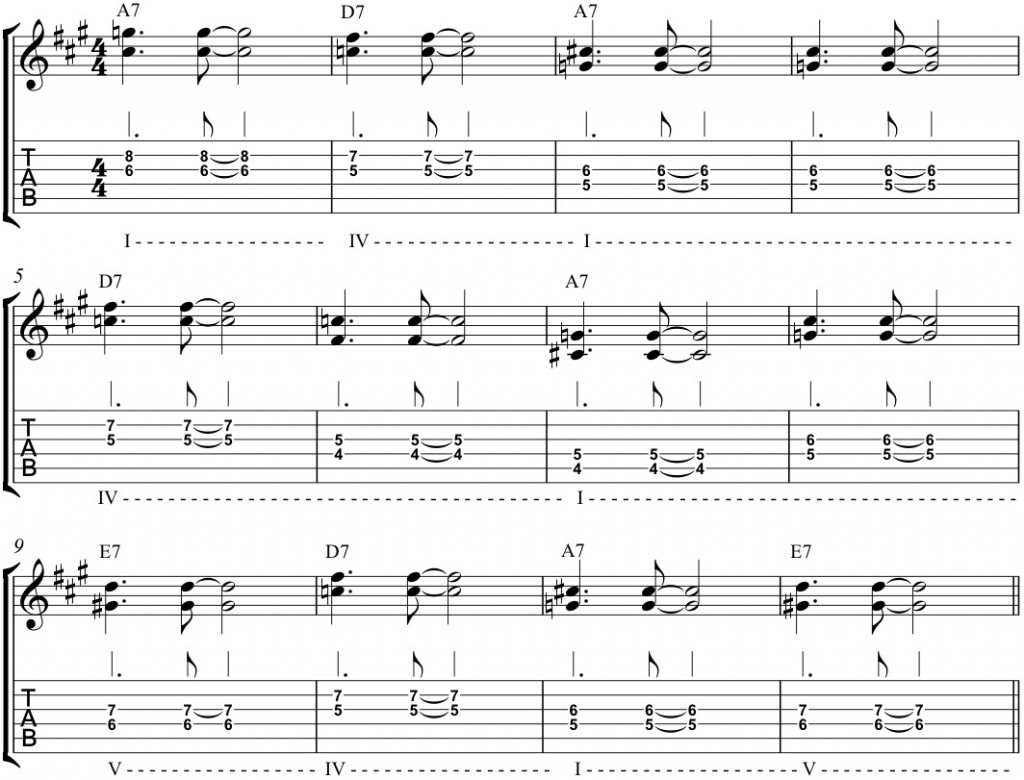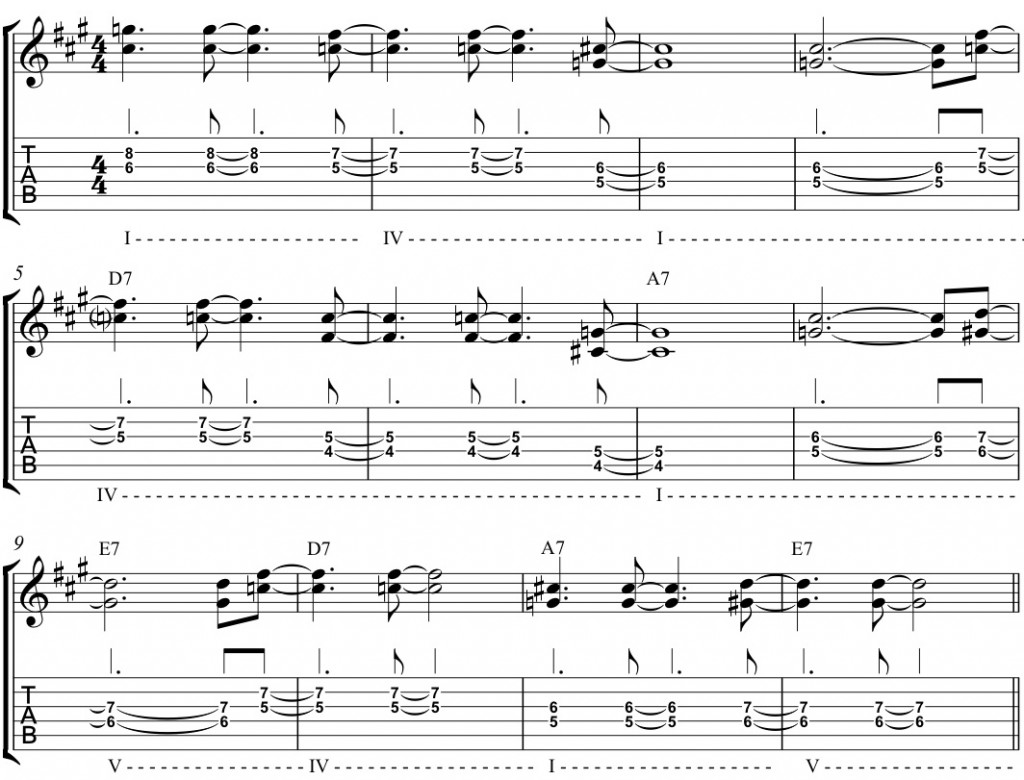Using Guide Tones in the Blues (3rds and 7ths)
by Simon Joseph James
Over the years I have listened to and transcribed the music of a lot of great guitarists over a range of genres. Through this I have come to notice two very important lessons:
- In Melodic and Rhythm comping lines the placement of the 3rd and 7th chord tones is crucial to establishing strong tonal centres.
- Anticipated chord tones- those that come on the upbeat before a chord provide a forward motion to the music
Understanding how to use these key notes or ‘guide tones’ helps to develop good blues phrasing, a sense of the form and an ability to develop memorable and contrasting melodies that are more pleasing to listen to. In this lesson we will look at a really fun exercise that will help your phrasing to develop around the key notes.
For a selection of backing tracks to practice playing along to follow this link, or alternatively with a metronome set on the 2nd and 4th beats try recording a Blues bass line or rhythm part for a I-IV-V progression in A or if
Example 1: Harmonic Pull
Over the recording play the following notated guide tones 3rd and 7th parts over the top and see how this relates to the Blues. Notice the harmonic pull that each resolution creates.
Example 2: Rhythmic Pull
In this example I have varied the rhythm slightly in each measure so that the 3rd and 7th guide tones chords come in on the upbeat before the changes. Notice that when you play over the backing track the two note chords create a rhythmic pull that leads into each proceeding change.
Example 3: Melodic Line
In the final example try putting a Melodic line in between the resolutions and see how your phrasing becomes more concise. By inserting more concise blues phrases in between the two note guide tones chords your playing will become more solid with the form of the blues as well as assisting in the development of single melodic ideas that are much more pleasing for the listener:
Work on this for all of the I-IV-V chords in the progressions and then try moving it around to all 12 keys. This is a really handy method for accompanying yourself when your practice. Not only does it assist in your blues solo phrasing but it helps to develop new ideas for rhythm parts.
For more lessons on Scale Intervals, Improvisation and Blues Guitar please check out my ebooks the 30 Days to Better Blues Guitar and Essential Concepts in Guitar Improvisation.
“The artists you work with, and the quality of your work speaks for itself.”
Tommy Emmanuel
© Copyright Fundamental Changes Ltd 2024
No.6 The Pound, Ampney Crucis, England, GL7 5SA




